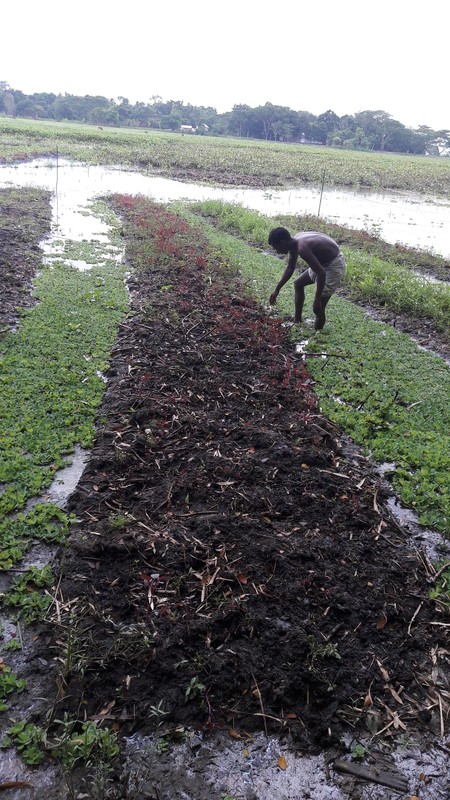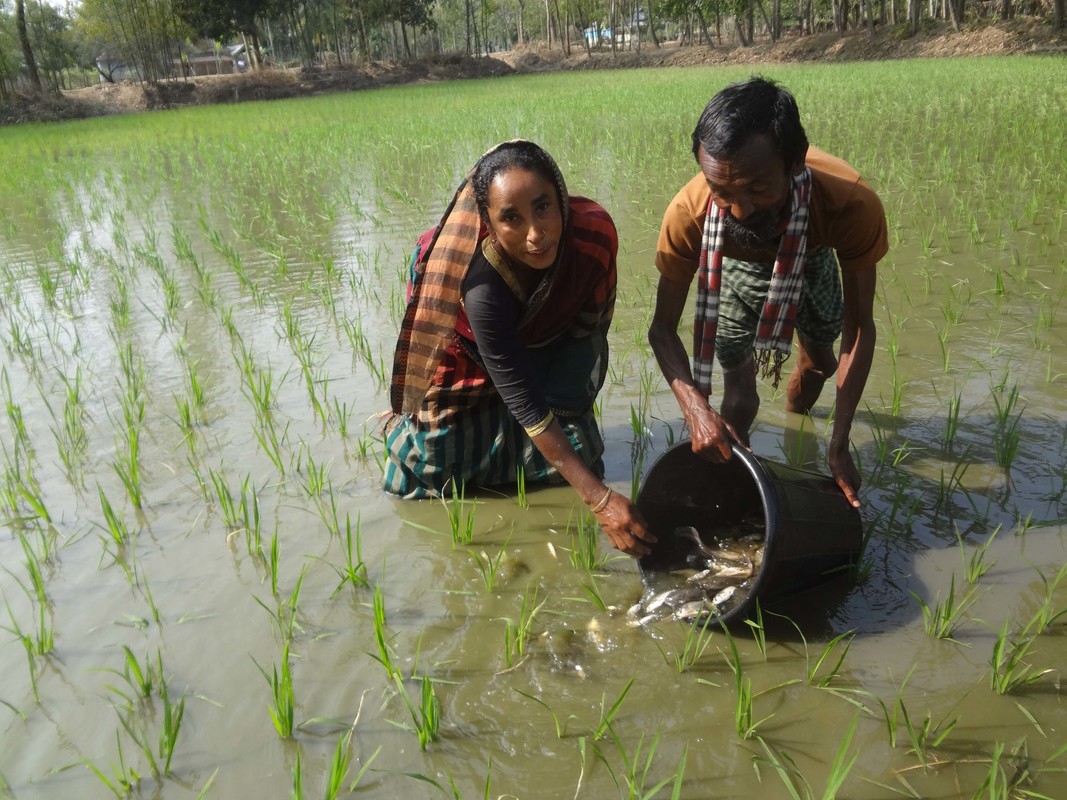WORLDWIDE – World Renew finds great joy in our work when we discover resources in God’s creation that can feed hungry people and restore worn-out farmland. When we join our knowledge and experience with the knowledge and experience of farmers to test creative ideas, we often find abundance where there was hunger and joy where there was deprivation.
East Africa and Bangladesh: The ancient Aztec people in Mexico grew amaranth because it was highly-nutritious and tolerant of drought and heat. This super-grain’s popularity revived in the 1970s and World Renew began to spread the word in Kenya, Tanzania, and Uganda 20 years ago, promoting its power to feed malnourished mothers and children and build the immune systems of people living with HIV. And although many in North America disregard amaranth leaves as “pigweed,” in Bangladesh people eat these leaves grown in floating gardens. These photos show a man holding a bounty of the large, golden grain and a woman in Uganda popping the grain to make it more digestible.
Bangladesh: There are many places in Bangladesh that flood every year. Yet over 160 million people have to find a way to live and that spawns a lot of creativity! Clever farmers here build floating gardens from bamboo, water hyacinth, and compost and then grow nutritious leaf varieties of amaranth and other nutrient-dense vegetables, using what they have to provide abundance for their families!
Bangladesh: In flooded regions of northern Bangladesh, farmers there have noticed that the sesbania plant actually likes growing in very wet places. They have learned to use its sticks for cooking fuel and even fence-building. Together, we are now learning that sesbania enriches the soil when its leaves fall into the water. After growing sesbania and at the end of the wet season, this farmer plants potatoes and peppers in that same place. She and her fellow farmers have seen the big improvement this makes in their vegetable gardens.

Bangladesh: Women and men work to make compost that will rejuvenate their farm plots. The piles get very hot and have to be turned 4-5 times to foster the beneficial microbes that will nourish their soil and then their crops. It’s hard work, but well worth it for people who have very small plots of land that they must use continuously in order to eat.
West Africa and India: In Jharkhand State, India, farmers are managing the regeneration of eroded hillsides in order to re-grow trees in a way that will still allow for farming. Malto farmers here started with this hillside of stumps. By pruning away all but one or two shoots from each stump and keeping out firewood-cutters and grazing animals for a year, they were able to regenerate a low forest without the challenges of transplanting new trees. These farmer-managers are now able to grow crops in the partial shade and still have the fuel, building materials, animal food, and medicines that the trees can provide.
Cambodia: Mrs. Duong is a courageous, hard-working innovator! She uses sack gardens and egg-laying ducks to cope with erratic rainy seasons and floods and still provide food for her children.
Laos: In remote mountain villages here, people traditionally let their cows, pigs, and goats roam in the forest to find their own food. But, together we have discovered how much more meat and milk these animals can give when they are fed better grasses and legumes. Here is Laos, we found a Stylosanthes species of legume that is a great tropical substitute for alfalfa, a favorite of North American goats! Here, young girls cut the high-protein forage plant to feed the goats that feed their families.
Bangladesh and Laos: Tilapia and catfish provide small, affordable packages of nutrients that people in hot and wet countries can grow themselves. Since the art of fish cooking is a rich part of Asian culture, we are happy to help anyone who can dig a pond learn to “grow fish.”
Thank you for your partnership with us in this work.
Blessings,
Tom Post
Team Leader
World Renew Asia

